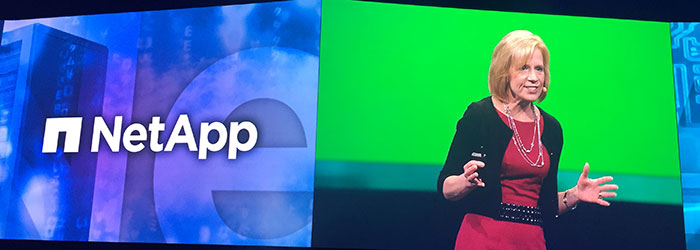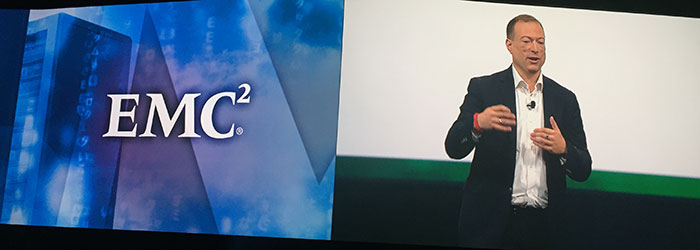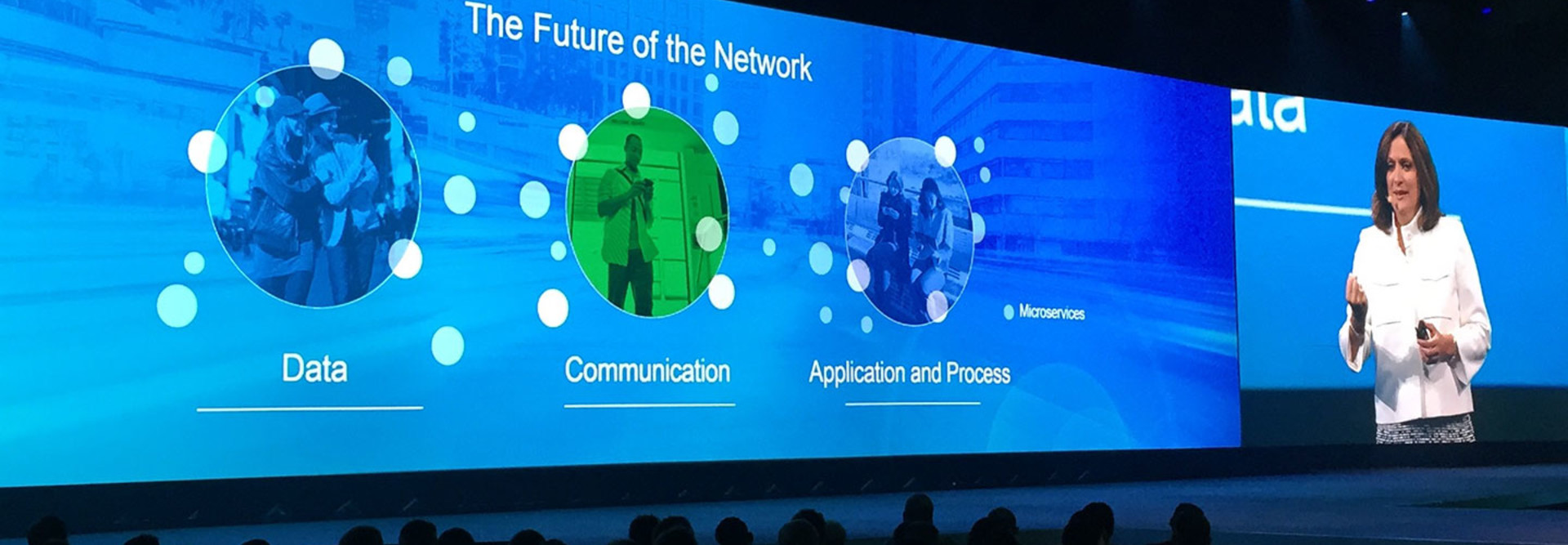Cisco Live 2015: Tech’s Next Big Disruption Will Be the IT Career
The past is not always a great indicator of the future. For IT professionals, the Internet of Everything (IoE) will forge new roads, for which there are no maps — yet.
At Cisco Live 2015, more than 25,000 IT pros gathered to learn about new trends shaping the industry and how skill sets can be retooled.
Rebecca Jacoby, Cisco’s CIO, said it’s time to talk about how we can transform ourselves in a new way and solve big business problems.
“We are looking at a major transformation, and this is important to every single individual here, not just because it’s something you can do to help your company,” she said during a keynote on the evolution of the IT career. “It’s really important for every individual to think about how this is going to change your job and your opportunities.”
To help explain how IT organizations can bring IoE to scale, executives from NetApp, EMC and Intel joined the discussion.

IoE’s Unintended Consequences
The cloud and the Internet of Everything are transforming most of what the industry has known about technology and our personal behaviors.
Cynthia Stoddard, CTO of customer solutions at NetApp, opened with a startling admission: “I’m an addict. I check my smartphone compulsively. And the more I use it, the more I want to be connected.”
But, Stoddard said, more things connected to the Internet means more things to manage, secure and control.
“How are we going to deal with this in IT?” she asked. “How can we take back control, mitigate risk and embrace the big important changes that we are faced with today?”
Luckily, the industry is rife with options. To take full advantage of the cloud, you need new tools, new techniques and a new mindset, Stoddard said.
“The cloud story is not cut-and-dried for everyone. Customers deserve choices; that’s why we believe so strongly in the hybrid cloud model,” she said. “But there’s more to the story than just having a set of applications over here on cloud and a set of apps over there on prem.”
Stoddard said the future for true lifecycle applications management is to have both: to start an app in the cloud, move it back on prem when the activity level is high and then put it back in the cloud when it reaches the legacy stage.
But that only addresses the technology part of the equation. Stoddard wants the key takeaway to be focused on people.
“IT transformation begins with people,” she said. “The Internet of Everything requires more than just technical skills. We know that technology is enabling, but it’s people who make the difference and drive business success.”
That’s easier said than done. It’s human nature to fear change, and uncertainty breeds anxiety, Stoddard said.
“I’ve seen many IT organizations make the mistake of trying to solve immediate business needs only with a technology solution,” she said. “But it takes an understanding of the people, the business policies and processes to drive successful change.”

The Third Stack
In the last four years, cloud has gone from a buzzword to a daily part of our IT lives. John Roese, CTO at EMC, has been at the center of this evolution.
But although the cloud drives the IT industry today, there’s still a great deal of work to do, because expectations continue to shift dramatically, Roese said.
“Right now we have clouds. But the problem is, once you have something, the expectations shift,” he said. “And the expectations now are very different, because our businesses, our CIOs, our boardrooms and our customers assume that what we have is agile. The expectation is no longer about building clouds, but about getting an output from those clouds.”
Some of those expectations are different from what we’re comfortable with, Roese said.
“Our businesses are now expecting us to predict and spot new business opportunities,” he said. “To deliver hyperpersonalized experiences to our customers, to innovate at a pace that we’ve never done before. It is not unusual today for a business to expect us to deploy the next service in minutes, hours, days, as opposed to months, years, decades.”
Sometimes, even that isn’t fast enough. “Many of our businesses are expecting us now to have the tools to operate in real time,” Roese said. “To be able to take the data that we have now and be able to use it to influence the outcomes of the events that are happening now.”
But Roese said there’s another reason to shift from learning how to build clouds to learning how to deploy them.
“The IT environment of the present and the future will be bifurcated,” he said. “We will simultaneously have to have on our clouds the mission critical applications that run our business, but it is unlikely that those applications will be the exclusive source of the innovation necessary for your business to truly disrupt your industry.”
Roese said those disruptions are starting to materialize in an entirely different stack that, in many cases, is running on the same clouds as mission critical infrastructure.
“This new stack, the third platform, or whatever you want to call it, is built in the modern Internet technologies,” he said. “It has a very different structure. Instead of being based on monolithic databases and monolithic applications, it is incredibly fragmented and layered.”
Roese said Cloud Foundry is a good example of this modern application framework, which is going to be critical to developing the Internet of Everything.
“On top of that, however, even the programming languages are changing,” he said. “Then, most importantly in this new stack, the operating model of how to develop software is radically different. There’s no more test and dev. There’s a new model that’s materializing called DevOps.”
So what does this mean for your IT career? “Like everything, when technology changes, people and processes change with it,” Roese said. “In this case, if you are an IT practitioner, not only do you have to do your day job and understand all the technology known today, but there are new things that you’re going to have to develop in your skill set to be relevant in this new world.”

Big Data Opportunity
Few can attest to the value of Big Data analytics as Diane Bryant, senior vice president and general manager of Intel’s data center group, can.
“There’s always been value in information. But in the move to the digital services economy, data is the new currency,” she said. “I believe data analytics is going to be the next big industry disrupter.”
Specifically, data analytics can help reduce operational costs and increase top-line results by creating new services or improving existing ones.
“The more data, the better,” she said. “But the problem is, all of us in IT are swimming in data. So the number one cited barrier to the adoption of Big Data analytics solutions today is looking at the data and finding the bubbles. We are wading through the data and waiting for these insights to come bubbling up to the surface.”
Just getting started is the hard part. For Intel, building out a new Big Data analytics discipline began with targeting the easier opportunities in marketing and sales, using data that was already available.
The results were astounding, Bryant said, with Intel realizing more than $50 million in savings and $300 million in revenue.
“Once you have big successes like these under your IT belt, the lines of business are willing to entertain a little more creativity in the application of analytics in building new business processes that are fundamentally built on data analytics,” she said.
Next comes tackling the shortage of skills needed in the IT industry to truly tackle the barriers to Big Data adoption.
“We need more investment by the IT community,” Bryant said. “It’s our job to make technology more accessible. And we weed to create a learning culture in the business to keep up with the continuous pace of change.
“We’re at the very beginning of a new era of business that’s enabled through technology,” Bryant said, “an exciting era of business that I believe will create the next competitive differentiator for businesses and the only question is, ‘Will you be the disrupter or the disrupted?’”









